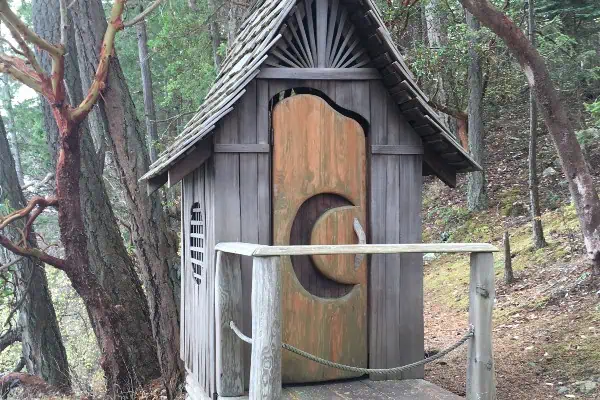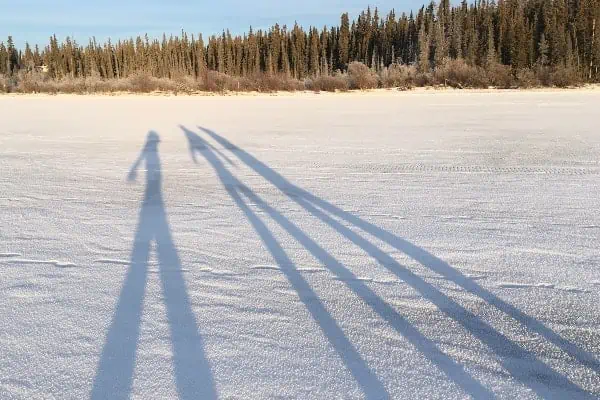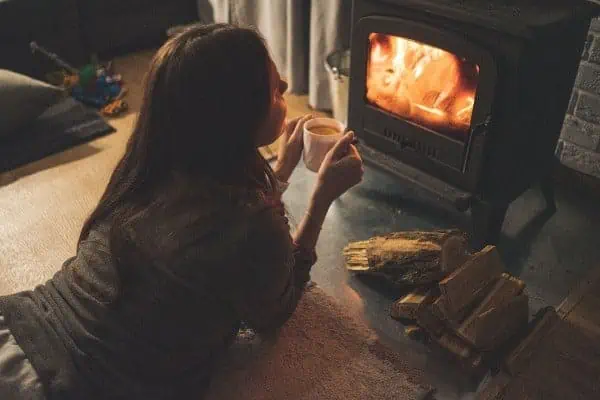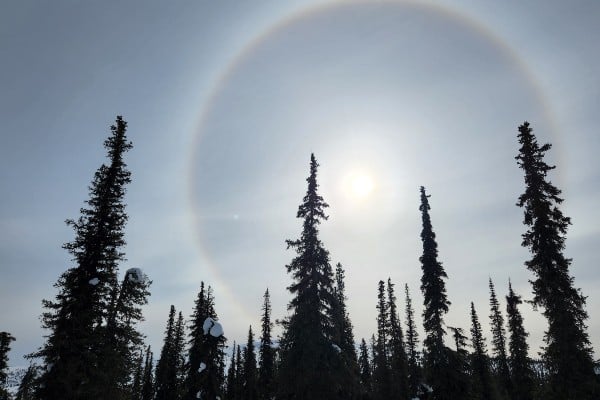After you’ve picked your first few batches of mushrooms, and haven’t landed in the hospital,
you’ll find the mushroom conversation branches into themes of field testing, drying, and alternate uses, such as medicines, dyes and crafts.
The best mushrooming advice I ever got was from experienced mushroom picker Esa Ekdahl. She told me to start by harvesting only one type of mushroom that I could positively identify. Over twenty plus years of picking I’ve added species to the mix as my confidence and familiarity grew.
I use the popular field guide All the Rain Promises… And More by David Arora. It opens with sound advice, such as caution against mixing wild mushrooms with red wine; cook your harvest because wild mushroom are really hard on the stomach; and don’t bother with skimpy specimens.
There’s plenty of local knowledge on Facebook, like the group Yukon Shroomers. Members of the group are ready to help each other identify new finds and uses. They tend to keep quiet about favourite mushroom patches, but that’s to protect them from overpicking.
To pluck or cut? This debate rages through the mushroom picking world. Europeans told me to cut mushrooms so they can regrow. First Nation friends ask, “So we’ve been doing it wrong for thousands of years?” Mushrooms have long taproots and a natural break point just below the surface of the soil. Since I usually forget my knife, I dig down to get a firm grip low on the stem and wiggle the mushroom free, like a loose tooth.
In general, fatally poisonous mushrooms aren’t found in the Yukon, but there are plenty that will make a person sick. In the event of stomach ache or vomiting after eating wild mushrooms go to the hospital or call 9-1-1. Don’t wait for it to get worse.
My personal edibility test starts with a sniff under the cap. Does it smell like something I’d like to eat? If so, I wet my lips, break off a small piece and wipe it on my mouth. If my lip goes numb or feels like it was just frozen at the dentist, I toss it. Lastly, I chew a small piece, taste it, spit it out – and wait. Is there a bitter flavour? Peppery? Antiseptic? If it tastes pleasant, I take it home for visual comparison with my mushroom books.
Mushrooms can be wormy, but careful trimming gets rid of most. If I fry the mushrooms to eat immediately, residual worms will shrivel up and die. During oven-drying, the worms become dust.
After picking and trimming, I dunk each piece – fast – in a bath of a capful of lemon juice mixed with a cup or two of water. It helps kill worms, keep the colour, and results in a more appealing reconstituted product. Then I dry them.
Out of respect, I give thanks when picking. After all, I don’t plant and cultivate this stuff, Mother Nature does. And I stick to my private property or known public open undeveloped space. If I want access to my neighbour’s horse field, or another nation’s traditional territory, I’ll ask. Also, I don’t pick in parks – national, territorial or municipal – especially if I plan on selling my surplus.
Did I say sell mushrooms? Ask around and there’s interest. Local restaurants, such as Café Balzam, buy quantities of mushrooms and other country foods.
Start building good experiences right now with the cooler late-season mushrooms. To learn what these are, check out your favourite guidebook, site or app. Happy picking.




